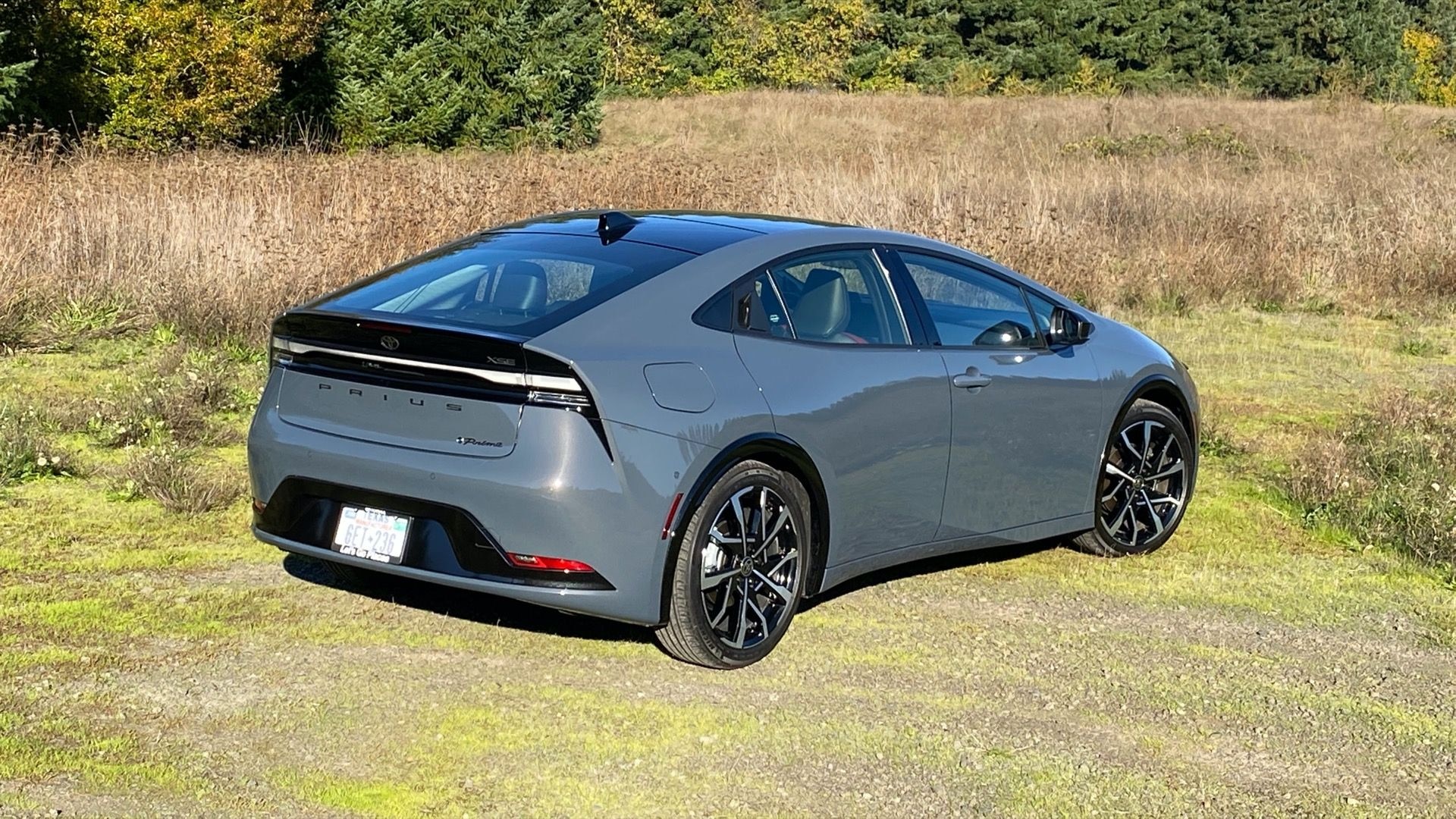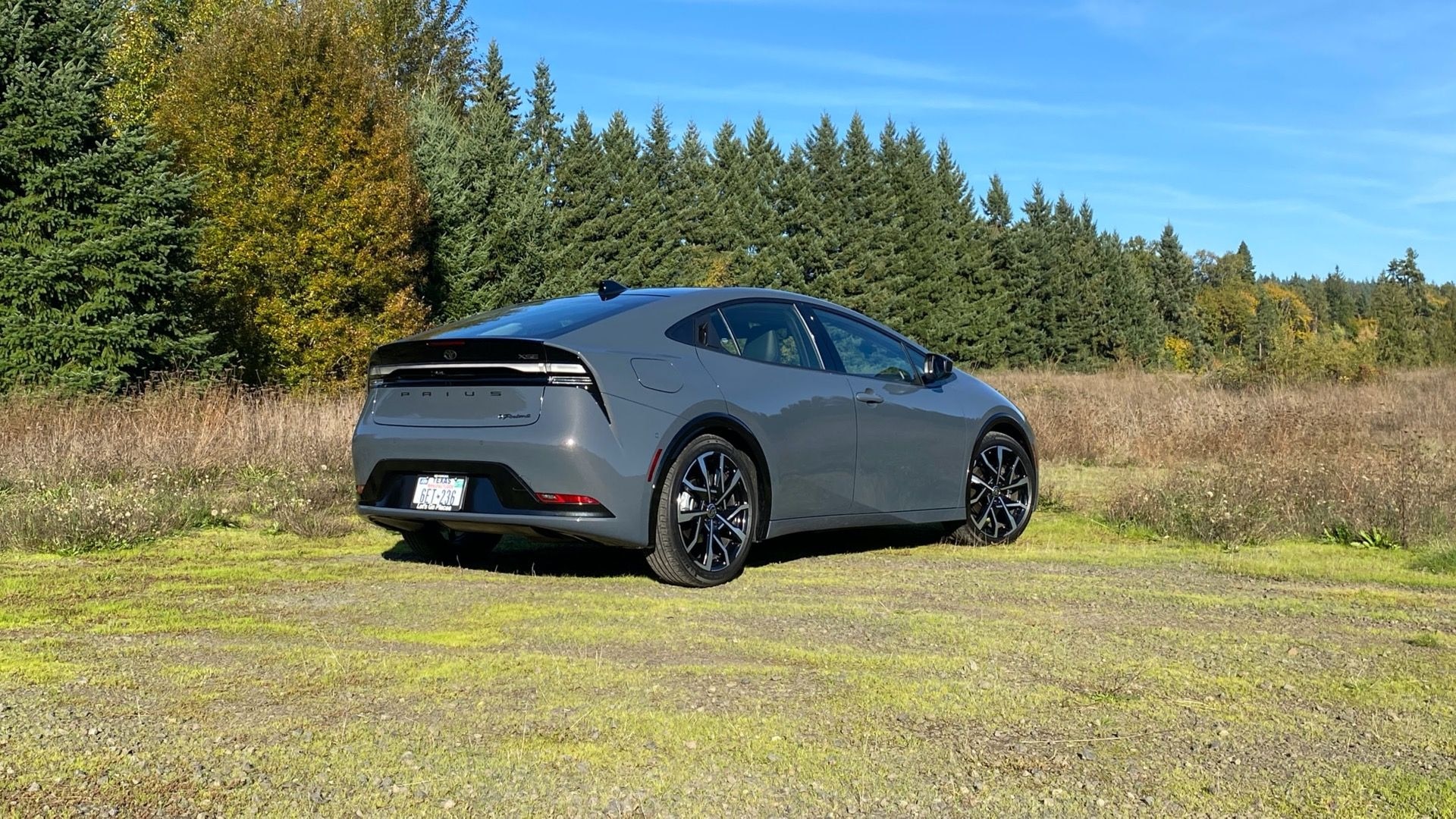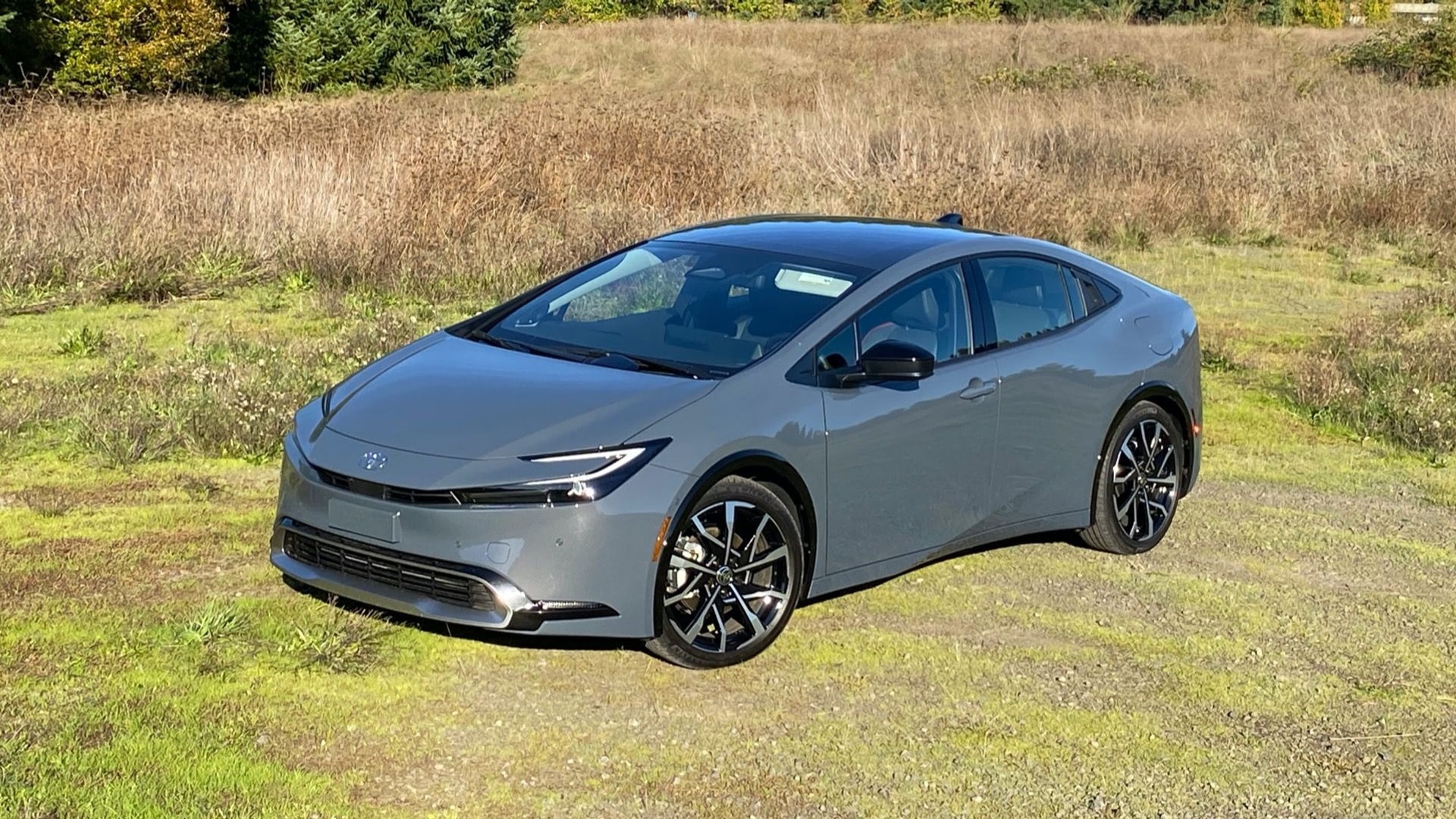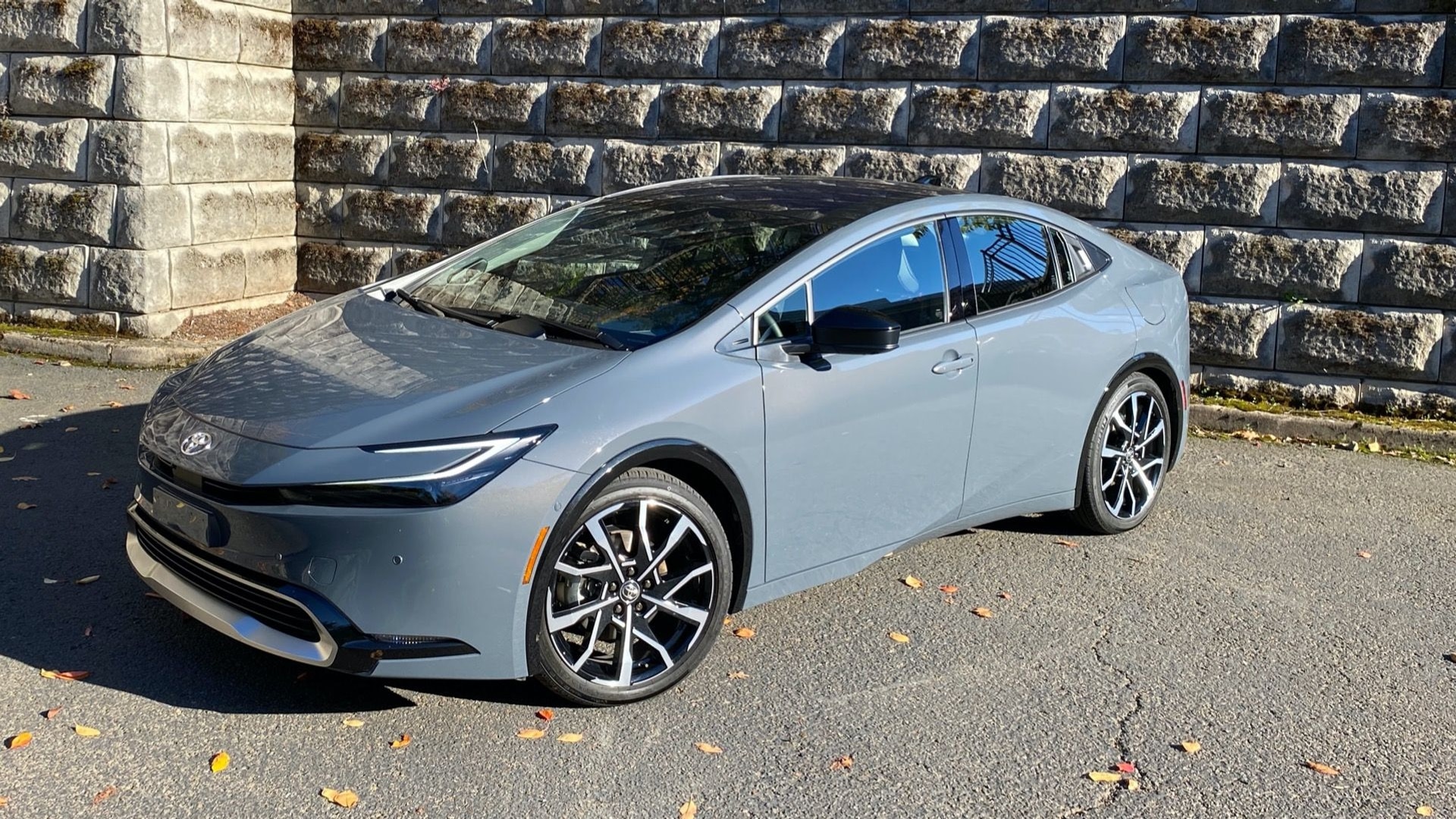Odds are when you first saw the latest 2024 Toyota Prius hybrid that started arriving earlier in the year, you not only saw a great-looking car but felt a little bit of nostalgia.
That’s because the latest Toyota Prius looks like it’s a descendant of the Prius that made the biggest waves in automotive history—the second-generation, 2004-2009 model. Yes, we’re nodding to the one that Hollywood wanted to be seen in, and the one that set the liftback look that originally hit a sweet spot for aerodynamics and functionality.
Prius design lost its way after that, but it’s back. And while Toyota has innovated by vastly improving the driving experience as well as the look of this latest Prius, it’s not entirely the return to form in all the ways you might expect of a Prius.
This Prius essentially carries over its efficiency numbers as a hybrid with up to 57 mpg, while offering an incremental improvement in electric-only range (up to 45 miles) as a 2024 Toyota Prius Prime plug-in hybrid.

2023 Toyota Prius Prime
The Prius Prime has gone from merely 11 miles of EPA range in its first generation for 2012-2015 to 25 miles in the 2017-2023 version, and now to 40-45 miles, depending on the version, with a 13.6-kwh battery instead of the outgoing version’s 8.8-kwh one.
You might argue that the Prius Prime hits a sweet spot now in keeping the battery no larger than needed to cover daily commute needs, easily exceeding the U.S.-average 32 miles or so daily. In looking at manufacturing footprint and easing supply-chain issues, smaller batteries are better—although here you are carrying around a gas engine for the vehicle's lifetime.
Expectations of what plug-in hybrids should be are evolving, and the Prius Prime doesn’t exactly raise the bar. It barely meets the standard set by the second-generation Chevy Volt, which arrived in 2015 as a 2016 model, with a 53-mile electric range and 42 mpg after that as a hybrid. California is asking for the new generation of 50-mile plug-in hybrids, and even Toyota has said that 120-mile PHEVs are in sight. So the leading edge this is not.
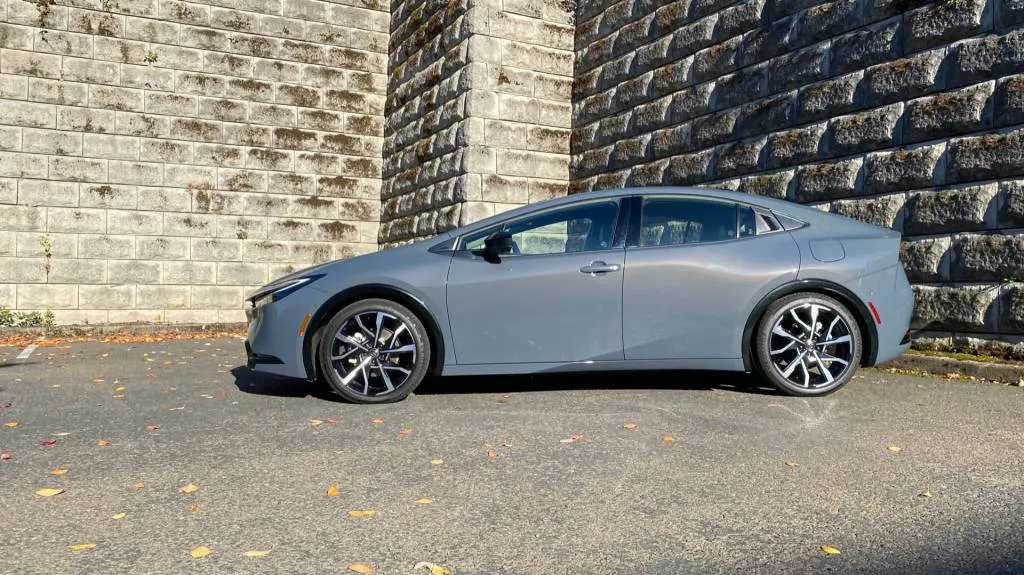
2024 Toyota Prius Prime
Any plug-in hybrid edge the company appears to be leaving to its SUVs. It really upped its plug-in-hybrid game with the current Toyota RAV4 Prime, which acted as a proof point to show that PHEVs could serve up top performance, all-wheel drive, and even longer electric range, together in one vehicle.
In driving fun, the new Prius family delivers. This generation of the Prius Prime gets a more powerful electric motor system, at 161 hp, which allows it to easily keep up with rapid traffic—even though it does accelerate quicker once the engine starts. Altogether, the 150-hp, 2.0-liter inline-4 combines with that electric motor system to make a combined 220 hp—meaning that the Prime is now as quick as some sport sedans. But you need the engine on to experience its quickness.
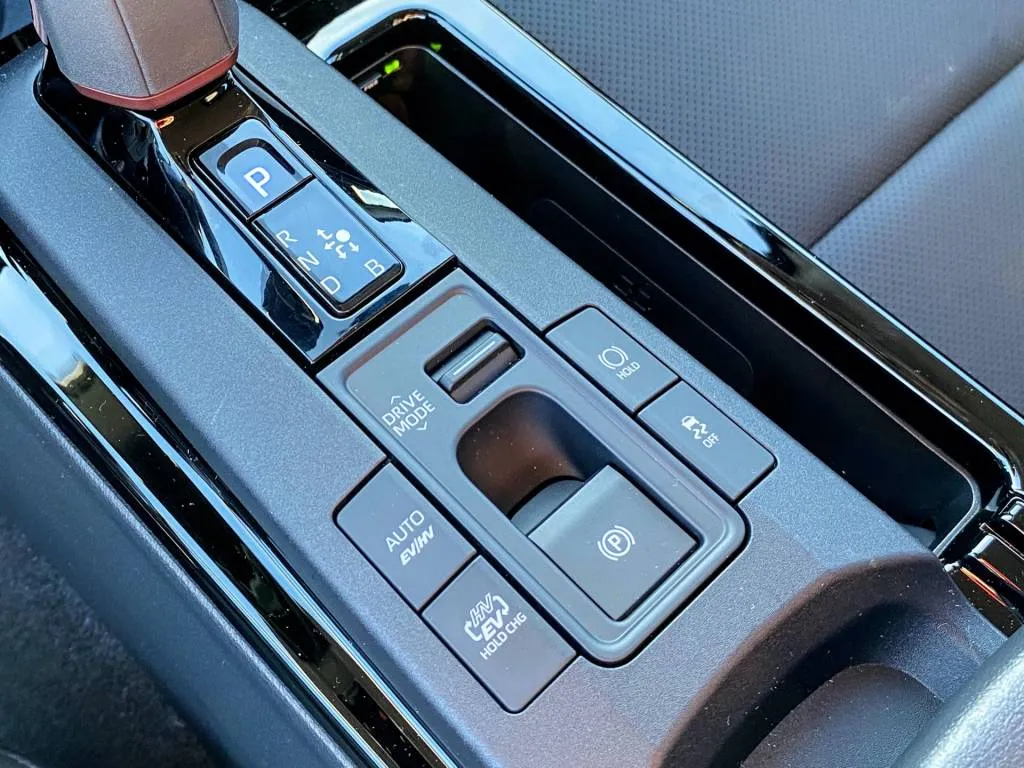
2024 Toyota Prius Prime
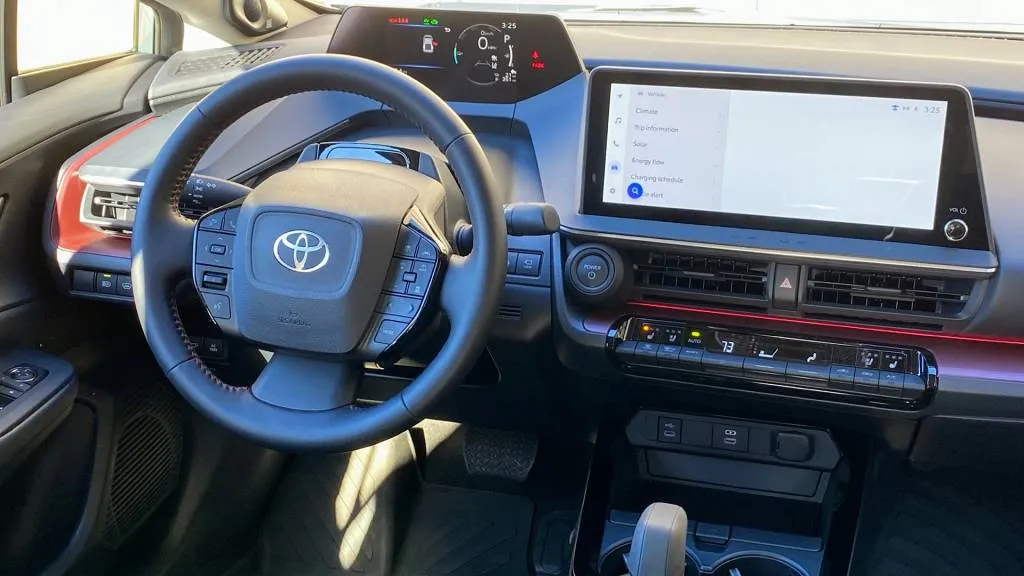
2024 Toyota Prius Prime
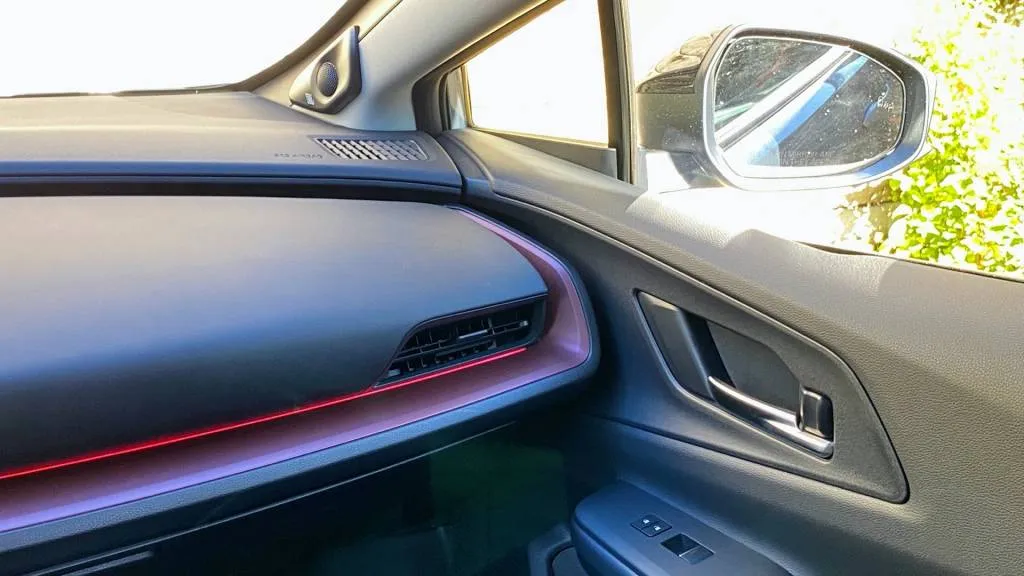
2024 Toyota Prius Prime
The Prime doesn’t appear to do anything to make the cabin experience feel more refined—and, just as in hybrid Prius models, the front seats could use some attention and rear-seat access can be tight. The Prime’s all-electric operation also simply underscores the highway road noise issue we’ve already pointed out for the hybrid Prius. And while the Prime has about 25 hp more, its roughly 250 extra pounds get in the way of any elevated driving experience or better ride.
The Prius Prime does a lot of things right. It prioritizes all-electric operation as long as there’s a charge (and its Hybrid mode hasn’t been selected), and it won’t fire up the gasoline engine when you ask for more acceleration. Top versions flaunt a solar roof that does trickle a small amount back to the pack—and if the energy history on our last test car was to be believed, it might add up to a significant amount over the lifetime of the vehicle.
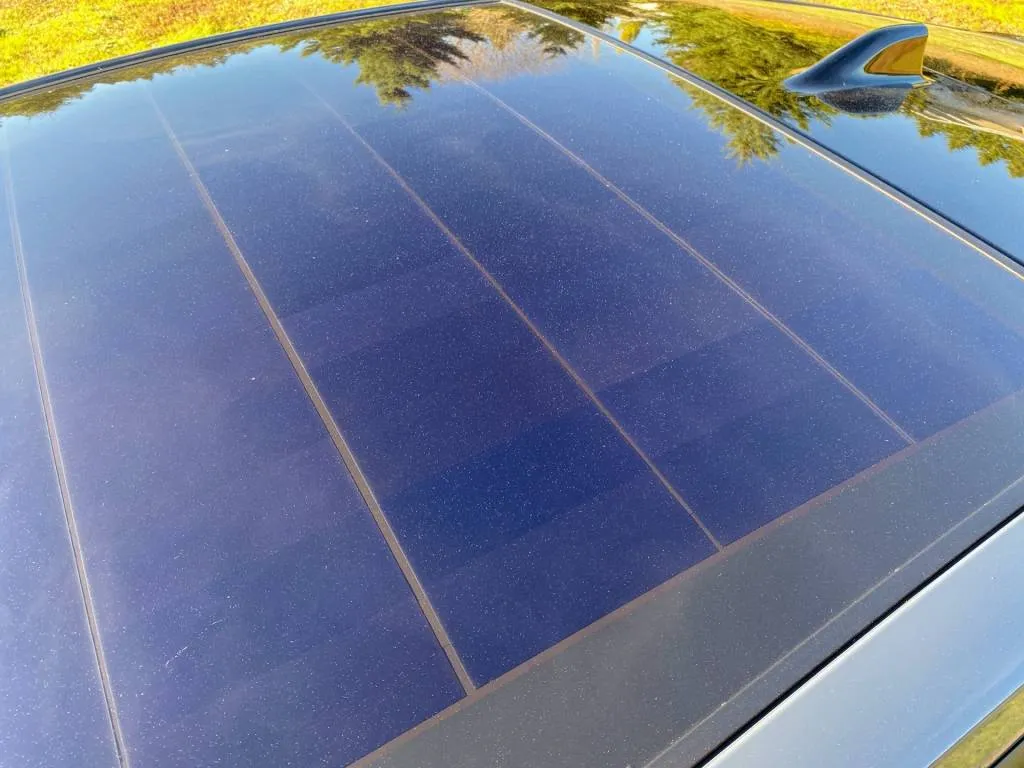
2024 Toyota Prius Prime
With temps in the 40s in Portland we struggled to reach 40 miles all-electric. But in mild weather in the 60s at our November Best Car To Buy testing in Georgia, we went 43 miles before the system switched over to gasoline.
The Prime’s 3.3-kw onboard charger tells us that even if Prime drivers wanted to maximize their all-electric driving with a mid-day charge, Toyota doesn’t see that toolset as being worthwhile in its own cost-benefit analysis. Toyota says the Prius Prime can fully charge in about four hours on 240 volts, or 11 hours on household 120-volt AC.
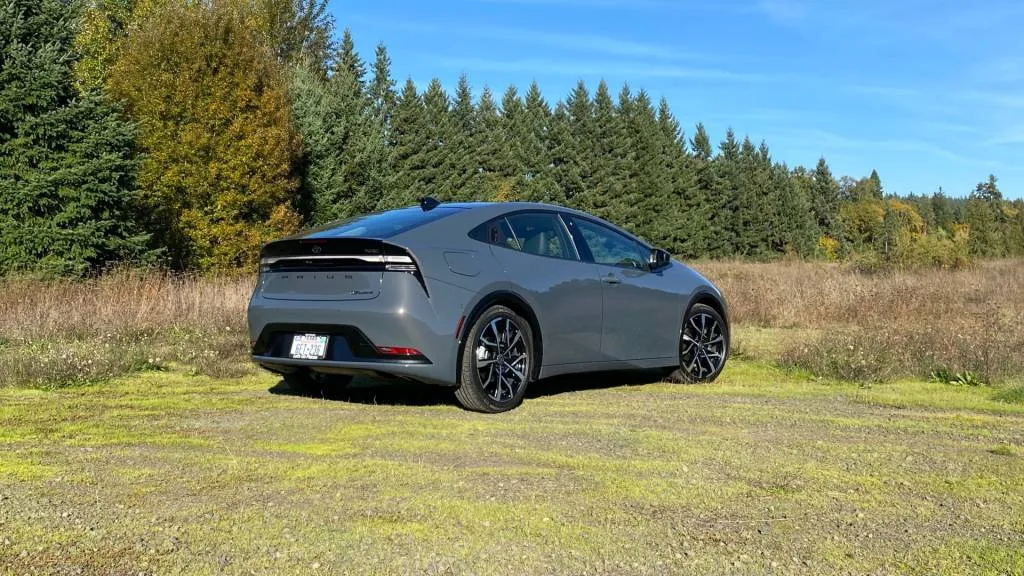
2024 Toyota Prius Prime
Finally, Toyota appears to be slotting the Prius Prime toward a niche existence. It opted to import the Prius from Japan in this generation rather than aim for U.S. assembly and an EV tax credit for the Prime.
The Prius Prime starts at $33,770, including the $1,095 destination charge, and it ranges up to about $43,000 in top XSE Premium form when loaded up with options like the solar roof, rear camera mirror, and tech package.
Does the Toyota Prius do enough to shift the conversation toward vehicles that will be driven without tailpipe emissions the vast majority of the time? It’s a question that, at the start of our Best Car To Buy conversation this year, we were still entertaining. Looking at some of these minor points, Toyota provides the essentials for that but definitely could have given this Prime more of an edge.
Read about the rest of the Best Car To Buy finalists, and check back for a winner Jan. 3.

